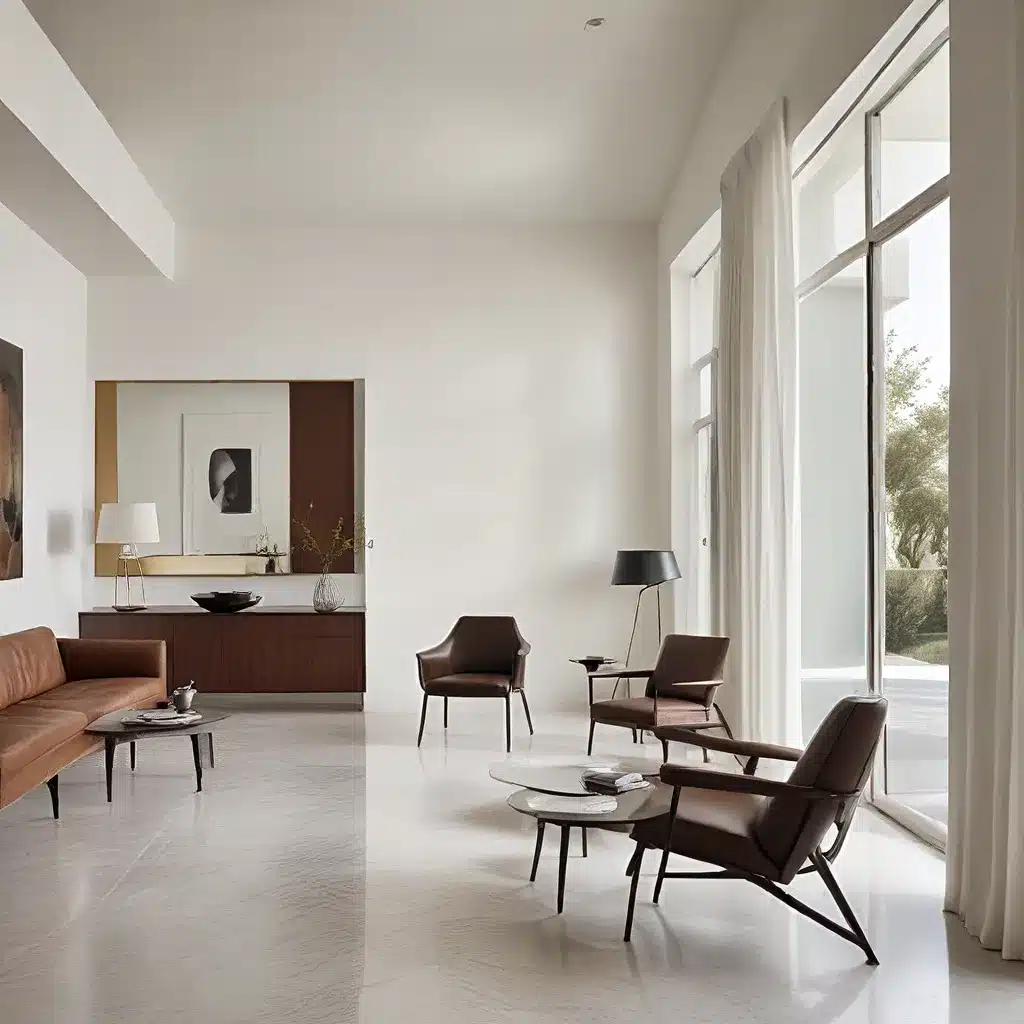
In the ever-evolving landscape of interior design, one architectural style continues to captivate and inspire homeowners and design enthusiasts alike – Modernism. Rooted in the early to mid-20th century, this movement celebrated the fusion of form and function, ushering in an era of unparalleled elegance and sophistication.
Unveiling the Essence of Modernist Design
At the heart of modernist design lies a reverence for simplicity and minimalism. Gone are the days of ornate embellishments and opulent flourishes; instead, modernist spaces embrace a restrained beauty that allows the inherent excellence of the materials and forms to shine. Clean, well-defined lines and a deliberate absence of clutter create an aura of tranquility and functionality, inviting occupants to truly experience the joy of living in a harmonious, thoughtfully designed environment.
The modernist movement, deeply rooted in the Bauhaus philosophy, championed the idea that form should follow function. This principle is evident in the open floor plans, seamless integration of indoor and outdoor spaces, and the strategic use of natural light that define modernist interiors. By prioritizing practicality and purpose over mere decoration, modernist designs offer a sanctuary of serenity amidst the hustle and bustle of everyday life.
Embracing the Beauty of Neutral Palettes
Modernist interiors often embrace a muted color palette, allowing the natural textures and materials to take center stage. Hues of white, gray, and beige provide a canvas for the elegant interplay of light and shadow, highlighting the architectural elements that give each space its distinct character. This deliberate choice to forgo bold or vibrant colors reflects the modernist ethos of understated elegance, where the inherent beauty of the materials and forms is allowed to shine.
The strategic use of natural materials, such as wood, concrete, and steel, further reinforces the modernist commitment to authenticity and functionality. These materials are celebrated for their inherent qualities, unadorned by excessive ornamentation, and are skillfully integrated into the design to create a harmonious and visually captivating environment.
Furniture as a Reflection of Modernist Principles
Modernist furniture design is a testament to the movement’s core values. Low-slung, horizontal silhouettes with clean lines and a deliberate lack of excessive detailing epitomize the modernist approach. Functionality and comfort are paramount, with leather, fabric, wood, and metal serving as the primary materials that seamlessly blend form and function.
The purposeful arrangement of modernist furnishings within open floor plans further enhances the sense of spaciousness and flow. Pieces are positioned to create defined zones without visually obstructing the overall harmony of the space. This strategic placement, combined with the minimalist aesthetic, contributes to the serene, uncluttered ambiance that is quintessential to modernist design.
Incorporating Modernist Art for Visual Captivation
The modernist design ethos extends beyond the built environment, finding expression in the realm of art and visual culture. Modernist artists, breaking away from traditional realism, embraced bold, abstract forms and vibrant, expressive palettes to redefine the boundaries of artistic expression. Incorporating these modernist art pieces into a space can elevate the overall design, infusing it with a dynamic, thought-provoking energy.
From the enigmatic allure of abstract art to the fragmented perspectives of cubism, modernist art offers a diverse range of visual experiences that can seamlessly integrate with the clean, minimalist aesthetics of a modernist interior. By strategically placing these captivating artworks within a space, homeowners and designers can create a harmonious dialogue between the built environment and the artistic expression that defines the modernist movement.
Achieving Modernist Elegance in Your Home
Embracing the modernist design philosophy in your own home can be a transformative experience, elevating the space and fostering a sense of tranquility and sophistication. Here are some key strategies to incorporate modernist elements and create a stunning, **>well-designed living space:
-
Embrace Minimalism: Declutter your space, opting for sleek furnishings with clean lines and a deliberate absence of excessive ornamentation. This will help create a serene, uncluttered ambiance.
-
Optimize Natural Light: Maximize the use of large windows and glass walls to allow natural light to flood the space, enhancing the sense of openness and airiness.
-
Incorporate Neutral Palettes: Embrace a muted color scheme of whites, grays, and beiges, allowing the natural textures and materials to take center stage.
-
Celebrate Functional Furniture: Invest in low-slung, horizontal silhouettes that prioritize comfort and practicality over ornate embellishments.
-
Curate Modernist Art: Strategically place bold, abstract art pieces throughout your home, creating a dynamic dialogue between the built environment and the artistic expression.
By incorporating these modernist design principles, you can transform your living space into a serene, sophisticated sanctuary that celebrates the timeless elegance of clean, minimalist lines. Whether you’re a seasoned design enthusiast or embarking on your first home renovation, embracing the modernist aesthetic can elevate your living experience and infuse your home with a refined, modern sensibility.

